The Christmas dessert table would not be complete without Sicilian Pignolata, also known as honey balls. Crisp on the outside and soft on the inside, these tasty little bites are drenched in sticky, sweet honey!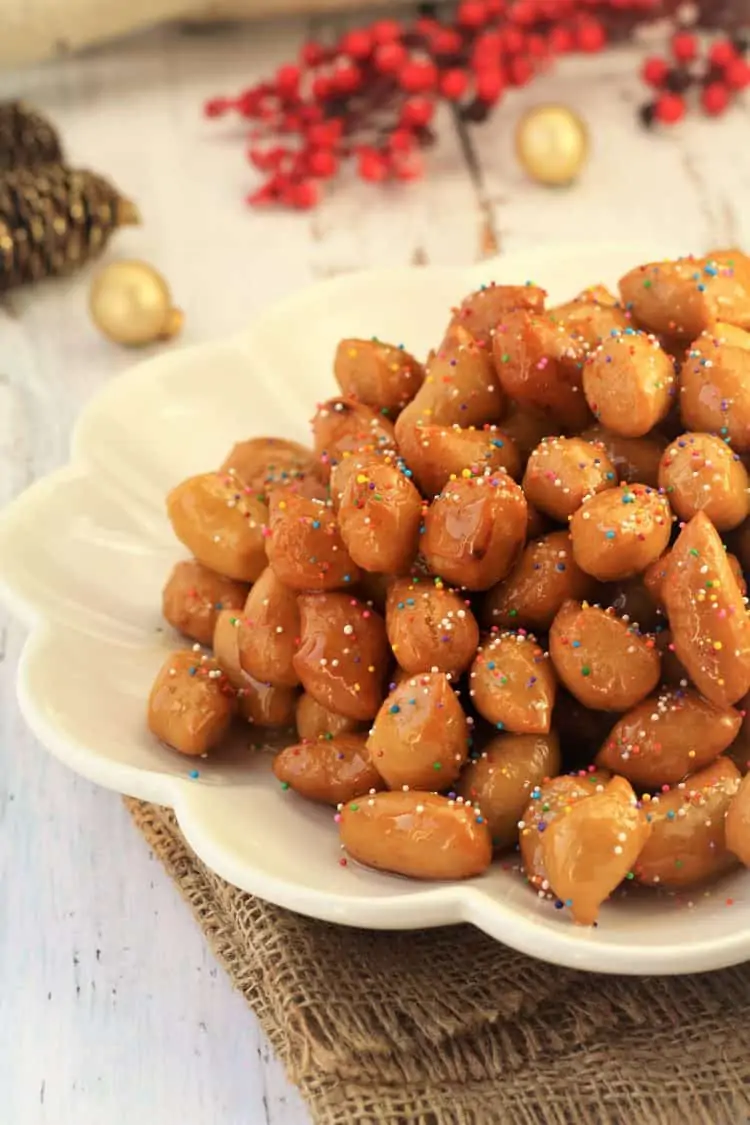 Depending on what region of Italy you are from, you may call these struffoli, cicerchiata, turdilli or in North America, Italian honey balls. The recipe will vary with the addition of different types of flavorings including alcohol (or none at all), lemon or orange zest, honey or even simple syrup.
Depending on what region of Italy you are from, you may call these struffoli, cicerchiata, turdilli or in North America, Italian honey balls. The recipe will vary with the addition of different types of flavorings including alcohol (or none at all), lemon or orange zest, honey or even simple syrup.
However, the basic concept of frying little dough balls and covering them with a sweet syrup remains the same throughout different regions in Italy. They may be served during the Christmas holidays, Carnevale in the month of February or even Easter.
For me, this is Sicilian Pignolata and will always be a Christmas tradition. There are a few other typically Sicilian sweets that are a must for special occasions and holidays such as:
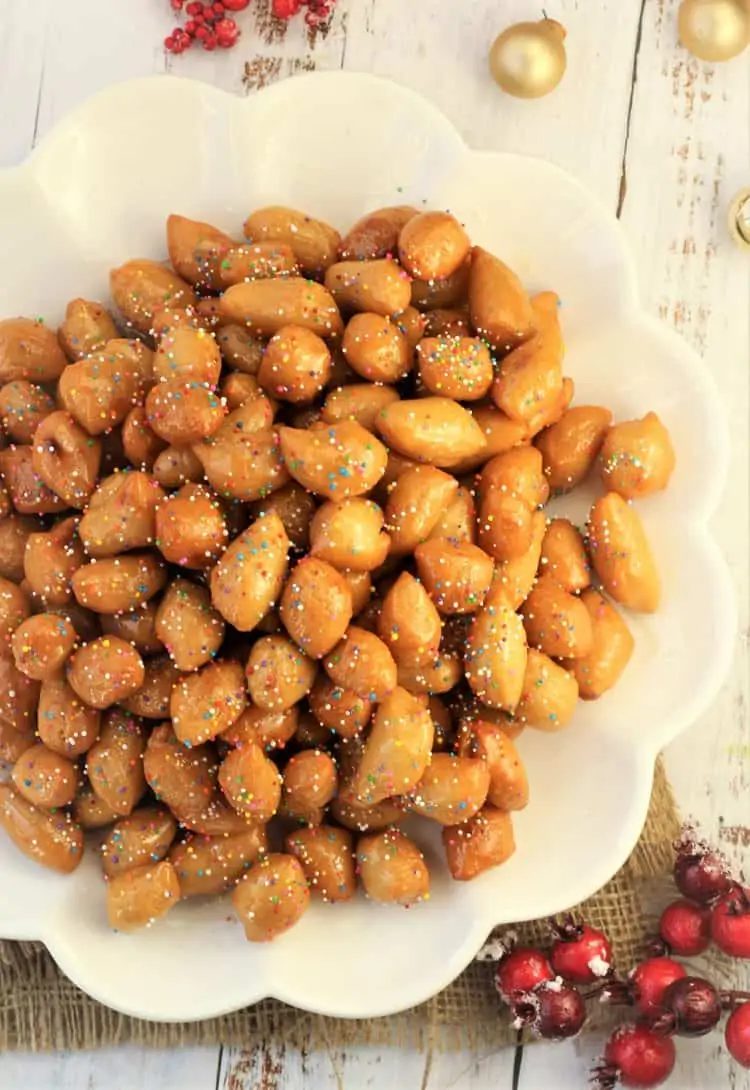
Origins of this recipe:
During the holidays, each of my aunts had her own Christmas specialty and pignolata was my mother's sister's tradition. Unfortunately that ended when my aunt passed and my mother didn't have that recipe. I recalled that my cousin in Sicily made us pignolata during our last trip to Sicily. So I decided to give her a shout and ask her for her recipe.
Imagine my surprise when she listed ingredients such as semolina, cinnamon and grappa! I verified this with my mother and just as I suspected, the pignolata recipe had definitely evolved throughout the years. Although my mother did not remember the original recipe, she was quite sure they did not have grappa to add to their pignolata back when she was a child. Regardless, I decided to give it a try.
I took my first bite and although it wasn't exactly my aunt's pignolata, I really enjoyed it. The semolina flour offers a crisp texture and the hint of cinnamon and grappa was just enough to give them a distinct flavor. And so this is the recipe I'm sharing with you for now but I'll still be searching for my aunt's original recipe!
But this pignolata is not shaped into balls!
You will immediately notice in my photos that this pignolata is not shaped into little balls as traditional pignolata is. This gnocchi like shape is how my cousin in Sicily shaped hers. Instead of cutting the ropes of dough into small pieces the dough is cut at an angle and looks more like gnocchi.
It is really up to you, you can cut your pignolata into tiny 1 cm pieces or longer gnocchi like shapes as shown here. 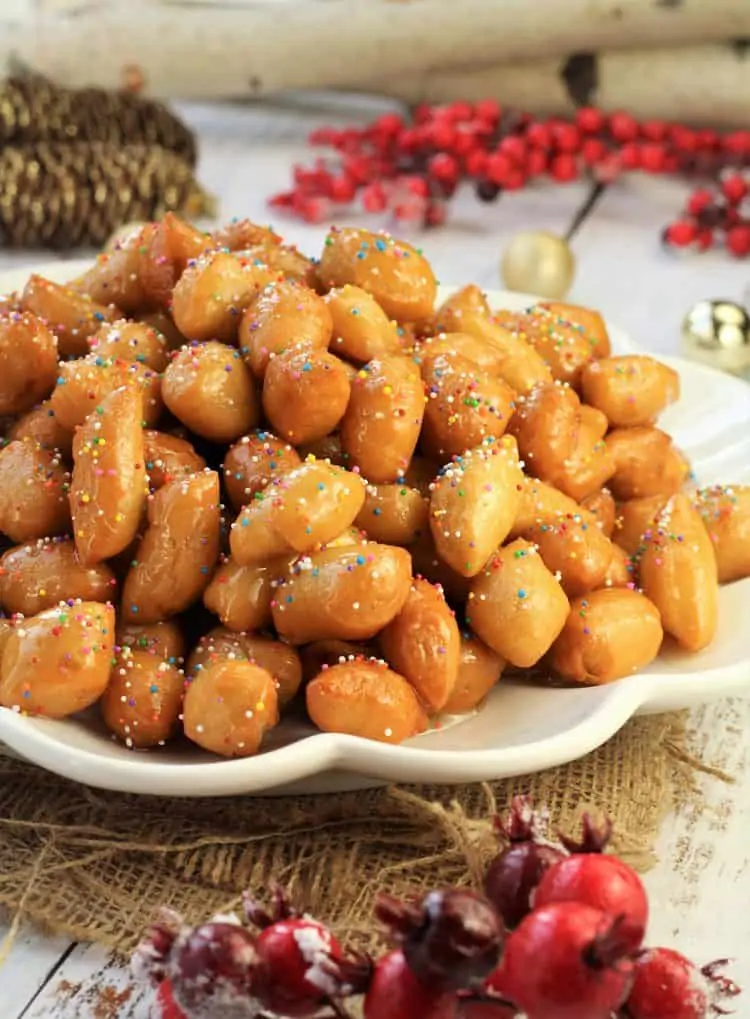
The following are step by step instructions with images to guide you through this recipe. Please scroll to the end of this post for the detailed printable recipe card.
How to make Sicilian Pignolata (with semolina):
Prepare the dough:
In a large bowl whisk together the dry ingredients: flour; semolina flour; sugar; salt; baking soda and cinnamon. Make a well in the center of the dry ingredients and add eggs; vegetable oil and grappa. Stir with a wooden spoon.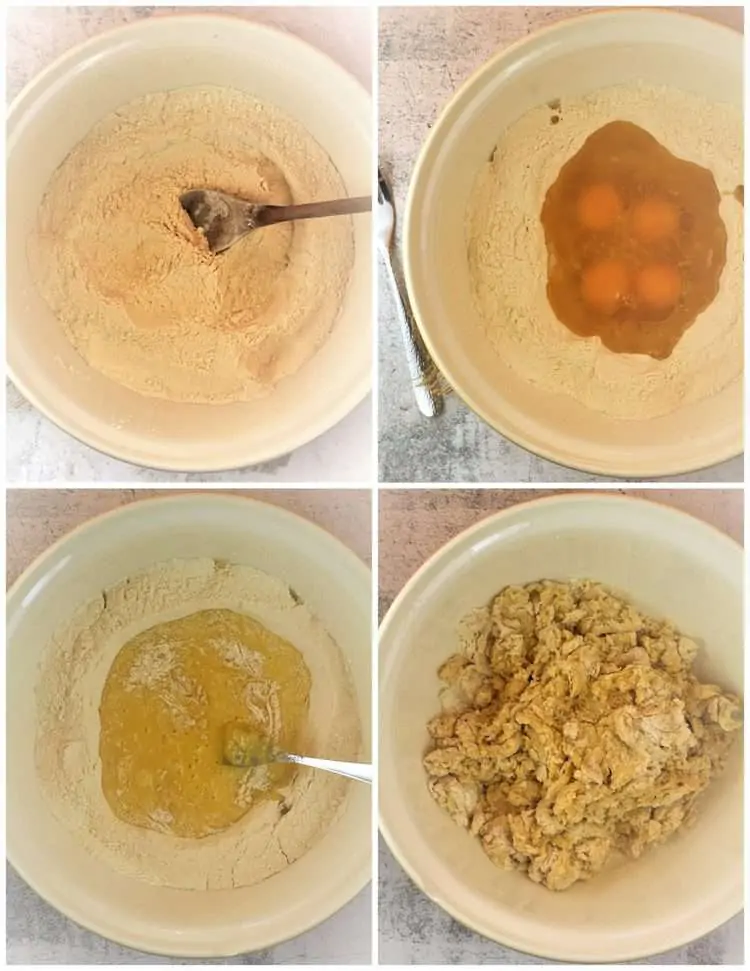 Scrape the mixture onto a lightly floured surface and shape into a dough. It will be slightly sticky, this is normal.
Scrape the mixture onto a lightly floured surface and shape into a dough. It will be slightly sticky, this is normal.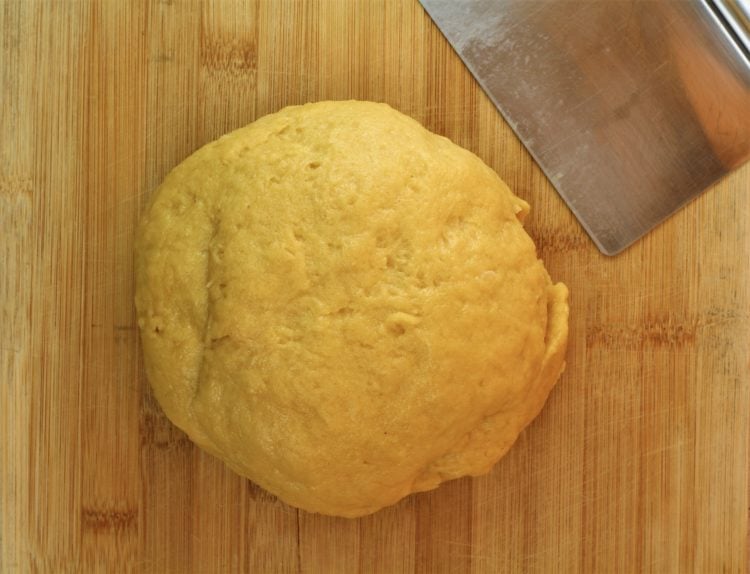
Divide the dough into 4 pieces. Lightly flour your counter and roll one piece at a time into a long rope about 1 cm thick. Cut at an angle into 2 cm pieces , as shown, or smaller 1-cm pieces. 
Place on a baking sheet covered in parchment paper. Continue with the remaining dough. 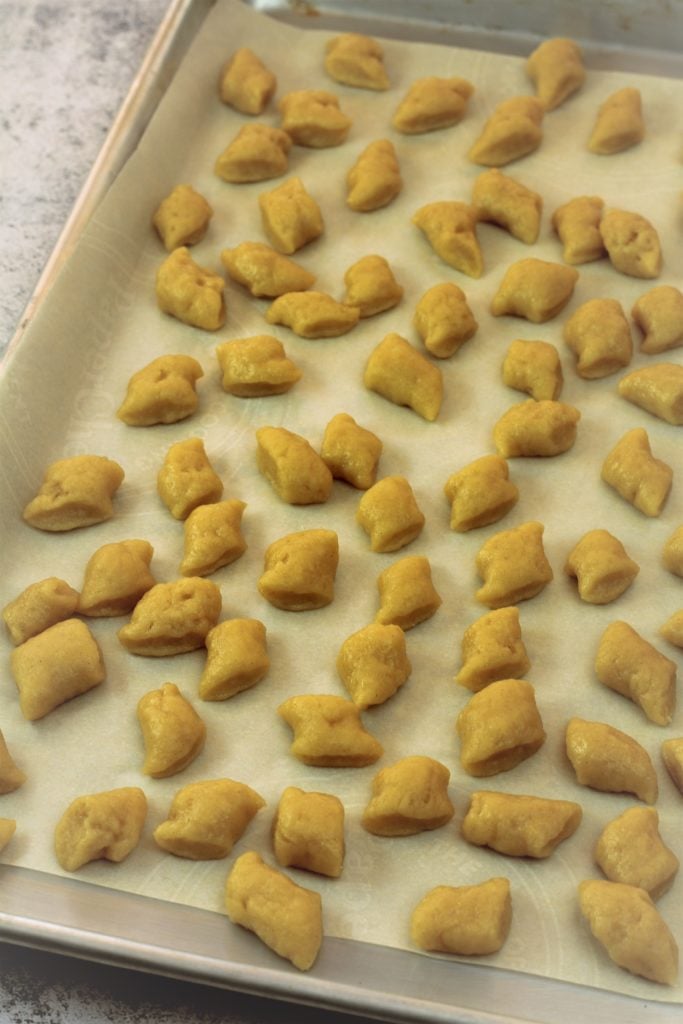
Fry the pignolata:
Pour about 1 inch of oil in a shallow wide frying pan and heat on medium-high heat. Test to verify if the oil is hot enough by dropping 1 piece of pignolata into the oil. It must be bubbling vigourously.
Use a slotted spoon or spider to carefully drop pieces of pignolata into the hot oil in one even layer. Do not overcrowd the pan. Cook about 2 minutes until golden brown. Transfer to a paper towel covered baking sheet. Repeat with remaining pignolata. 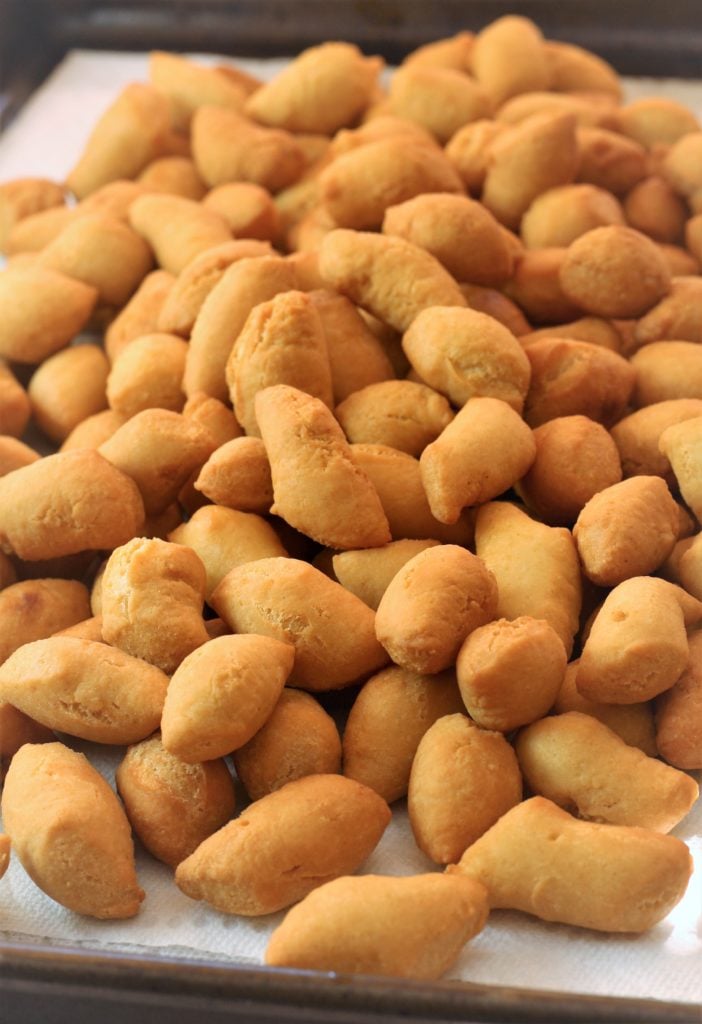
To serve:
In a small sauce pan, gently heat the honey until liquefied. Transfer the pignolata to a large bowl and pour in the warm honey. Stir until all pieces are coated with honey.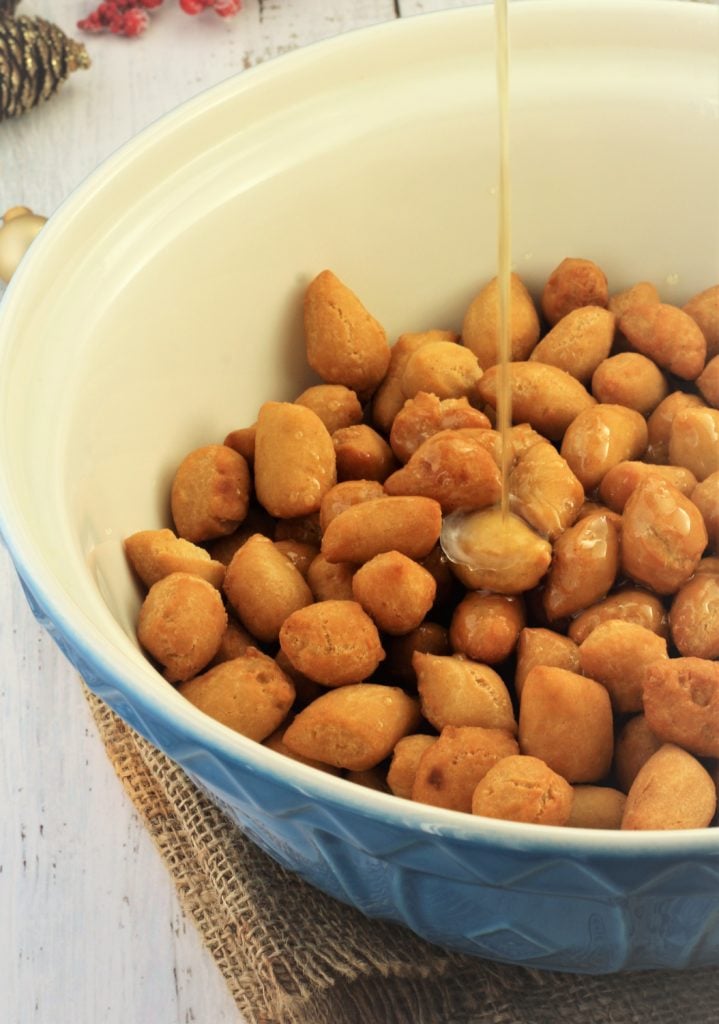 Place the pignolata on a serving platter in a mound (almost like a Christmas tree shape) and top with colored candy sprinkles before serving.
Place the pignolata on a serving platter in a mound (almost like a Christmas tree shape) and top with colored candy sprinkles before serving.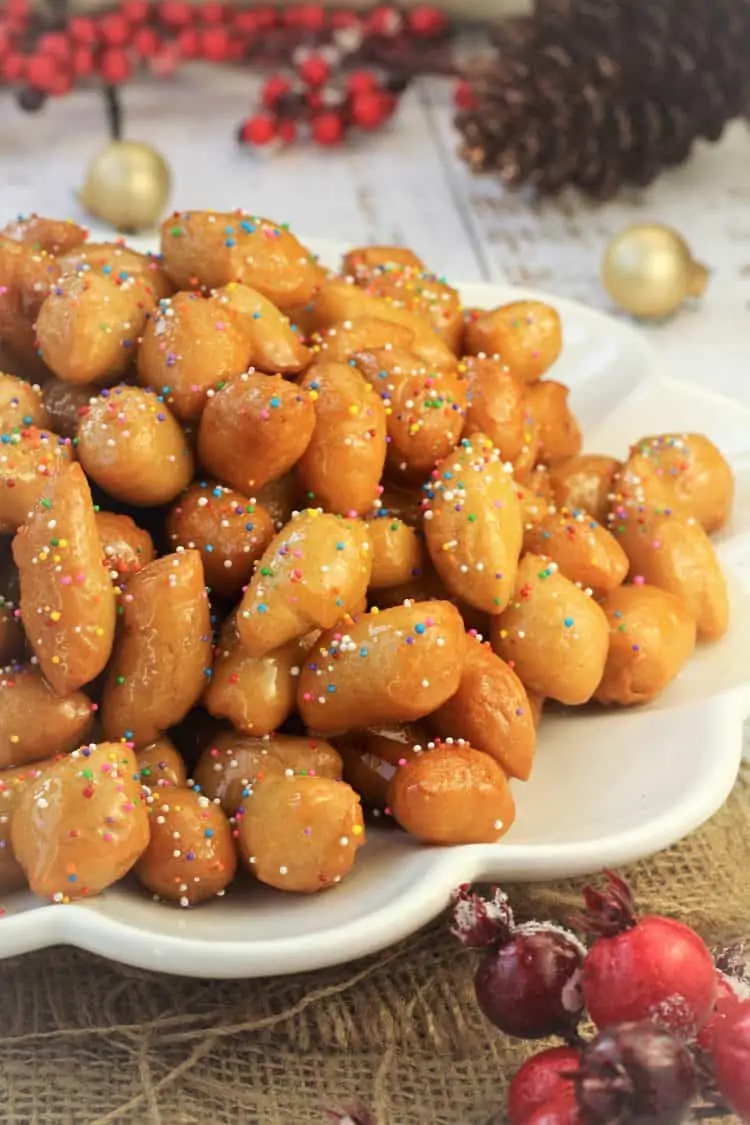
Watch my step by step Sicilian Pignolata making video:
https://youtu.be/6G8nJYYujSw
Tips and suggestions for making Sicilian Pignolata (with semolina):
- This recipe works with either regular semolina flour or 'semolina rimacinata' (double milled semolina flour that has a finer texture).
- If you don't have Grappa, substitute rum or brandy.
- After the first batch of pignolata are fried, you may haveto lower the heat down to medium as they will brown quickly and may not be thoroughly cooked in the center.
- Store pignolata in an air tight container at room temperature for up to 3 days.
- Pignolata can also be frozen prior to stirring in the honey. Defrost and toss with warmed honey as directed in the recipe.
Let me know how much you enjoy your Sicilian Pignolata by rating this recipe in the recipe card below. Feel free to Pin it for later. Happy holidays!

Sicilian Pignolata
Ingredients
- 2 cups all-purpose flour
- 1 ¼ cups semolina flour
- ½ cup granulated sugar
- pinch of salt
- ½ teaspoon baking soda
- ½ teaspoon cinnamon
- 4 large eggs
- ½ cup vegetable oil
- ¼ cup grappa rum or brandy may also be used
- Vegetable oil for frying
For serving
- 1 cup honey
- Colored candy sprinkles
Instructions
For the dough:
- In a large bowl whisk together the flour, semolina, sugar, salt, baking soda and cinnamon.
- Make a well in the centre of the dry ingredients and add eggs; vegetable oil and grappa.
- Stir with a wooden spoon until combined. Scrape the mixture onto a floured surface and knead lightly until a dough is formed. If sticky, add a bit more flour.
- Divide the mixture into 4 pieces. Working with one piece at a time, lightly flour your counter and roll the dough into a long rope about 1 cm thick.
- Cut into 1 or 2 cm pieces cut at an angle, as desired. Place onto a baking sheet covered in parchment paper. Continue with the remaining dough.
For frying:
- Pour about 1 inch of oil in a shallow frying pan and heat on medium-high heat. Do not fill the pan more than half way with oil. Test to verify if the oil is hot enough by dropping 1 piece of pignolata into the oil. It must be bubbling vigourously.
- Use a slotted spoon or spider to carefully drop pieces of pignolata into the hot oil in one even layer. Do not overcrowd the pan. Cook about 2 minutes until golden brown. Transfer to a paper towel covered baking sheet. Repeat with remaining pignolata balls.
For serving:
- In a small sauce pan, gently heat the honey until liquefied. Transfer the pignolata to a large bowl and pour in the warmed honey. Stir until all pieces are coated with honey.
- Place pignolata on a serving platter in a mound or wreath shape and cover with colored candy sprinkles.
Notes
- If you don't have grappa, substitute rum or brandy.
- After the first batch of pignolata are fried, you may have lower the heat down to medium as they will brown quickly and may not be thoroughly cooked in the center.
- Store pignolata in an air tight container at room temperature for up to 3 days.


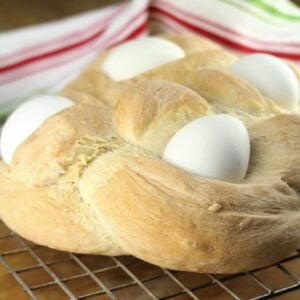
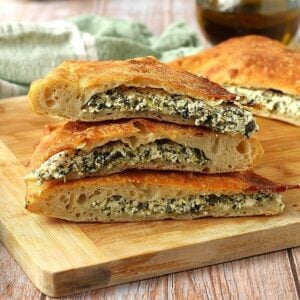
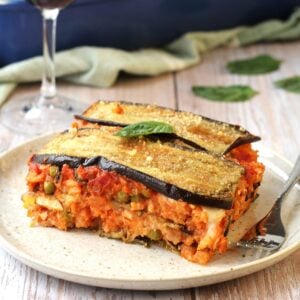
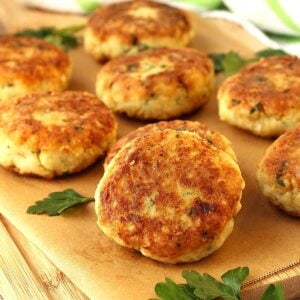
Nadia Fazio
This modern version of pignolata has semolina which gives it a great texture and grappa for flavor. Different from the traditional flour and eggs version, but a must try, it is quite addictive!
Mary Ann
My grandmother and aunts added chopped milk chocolate when adding the honey!
Nadia
Hi Mary Ann, yes I've heard of versions with chopped chocolate and even nuts. Sounds delicious to me, thanks for sharing!
Laura
This had not been made in my family since my grandmother passed 35 years ago I see it in Italian bakery but wow is coast.i will make this for Christmas thakn you so much.
Nadia
Hello Laura, I have actually never seen these in a bakery in my area. I do hope you enjoy them, all the best and happy holidays to you too!
Jenna
I am so excited to try this recipe and your
SFINCIONE SICILIANO (SICILIAN STYLE PIZZA)--It looks exactly how my grandma use to make. Theses two recipes have died with my Grandmother and her brother. No one in my family has passed this down or attempted to mimic it. This mean so much to me--that I found your page!! My grandmother use to put pieces of chocolate on her pignolata 🙂 (her mother was from Palermo,Sicily). Thank you for sharing your page with the world!!
Nadia
Hi Jenna, I hope you enjoy it! Let me know how it turns out. I like your idea of adding pieces of chocolate to the pignolata, sounds good to me! My family usually sticks to the colored candy sprinkles. Thanks for your comment!
anna kelley
both my mother and father were from sicily and came here as childred. My mother made it just like sarah wrote,
the only thing different was that my mom added sliced almonds to the fried dough when the honey was added.
this is much easier and i still use it to this day and i am now 76 years old.
Nadia
Hi Anna, there are so many variations of pignolata and the addition of almonds sounds delicious! Thanks for sharing this with me!
Sarah Belsito
I would like to make a comment in regards to the recipe for pinulate. I was taught by my Sicilian mother how to make the pignulate that she made when she lived there. The dough is just flour and eggs. Rolled in pencil thin strips and laid out to dry for several hours. Then cut in 1” pieces fried in oil until crisp. Heat honey to boiling, then when it reaches soft ball stage, turn off heat and add the fried pieces of pasta. Mix, turn out on a board to cool, then form into cones, thus the name pinulate or like pinecones...
mangiabedda@gmail.com
Hi Sarah, this is the way my relatives make pignolata back in Sicily. However your way sounds very interesting, I have never heard of that method before! That's what's so fascinating about Sicilian cooking, it can vary so much from one small town to another. Thanks for sharing this with me!